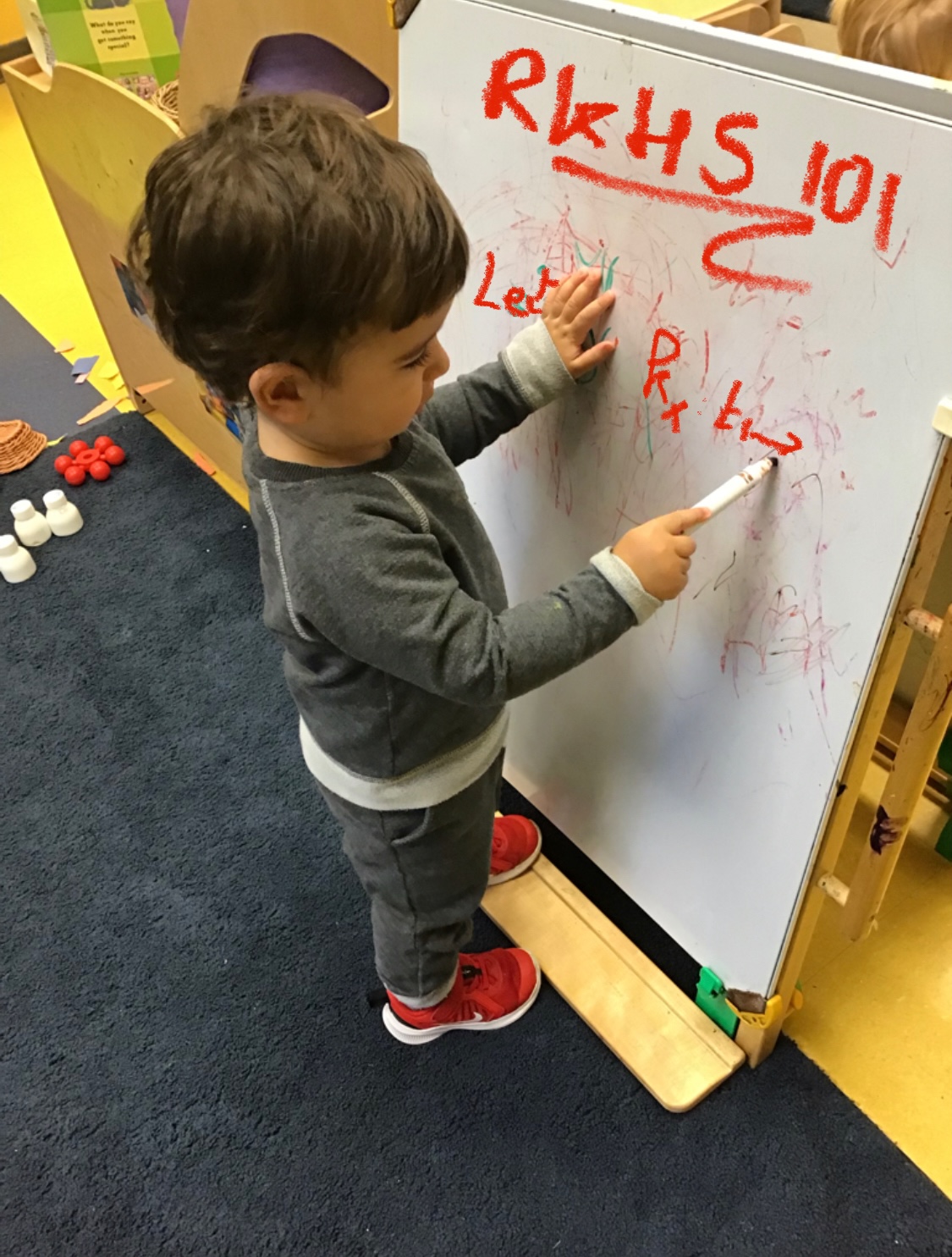Mathematical Foundations of Machine Learning
Prof. Matthieu Bloch
Wednesday, October 2, 2024 (v1.0)
Last time

- Last class: Monday September 30, 2024
- We showed that continuous linear functionals on Hilbert Spaces are inner products!
- This result is known as the Riesz representation theorem
- Today: (finally) wrap up Reproducing Kernel Hilbert Spaces
- To be effectively prepared for today's class, you should have:
- Logistics: use office hours to review for the
midterm!
- Jack Hill office hours: Wednesday 11:30am-12:30pm in TSRB and hybrid
- Anuvab Sen office hours: Thursday 12pm-1pm in TSRB and hybrid
- Dr. Bloch: Friday October 04, 2024 6pm - online
- Homework 4: posted, due Sunday October 20.
- We agreed to give you room to breathe, prepare for the midterm and enjoy Fall break
- However, the pace of subsequent homework will be faster (~1/week)
Midterm
- Date: Wednesday October 9, 2024 3:30pm-4:45pm in
usual classroom
- Please be on time and plan to finish when asked
- Open notes (slides, annotations, lecture notes, your notes) - no Internet, no AI, no textbook
- Coverage
- Everything up to and including Lecture 11 on Wednesday September 25, 2024
- Representer theorem is in scope (functionals and RKHS are not in scope)
- Remember what \(B\)-splines are but don't worry about proving the detailed properties proved in Homework 1
- My expectations
- You have worked on all the homework
- You have read the lecture notes
- What I am thinking about testing (this is not meant
to be a hint as to what will be on the test)
- Abstract Hilbert spaces: can you manipulate functions as if they were vectors?
- Orthogonality principle: can you apply it properly to solve an optimization problem?
- Least square regression: are you able to characterize the solution?
The big picture
For a Hilbert space \(\calF\) and \(n\) pairs \((x_i,y_i)\in\calF\times \bbR\), we know how to solve the following problem: \[ \min_{f\in\calF}\sum_{i=1}^n\abs{y_i-{\dotp{f}{x_i}}_{\calF}}^2+\lambda\norm[\calF]{f}^2 \]
We would really like to solve the following problem for \(n\) pairs \((\bfx_i,y_i)\in\bbR^d\times\bbR\) \[ \min_{f\in\calF}\sum_{i=1}^n\abs{y_i-f(\bfx_i)}^2+\lambda\norm[\calF]{f}^2 \]
The question whether \(f(\bfx_i) = {\dotp{f}{x_i}}_{\calF}\) for some \(x_i\in\calF\) function of \(\bfx_i\): can this be done?
- Reproducing Kernel Hilbert Spaces (RKHSs) are specific
Hilbert spaces where this happens to be true
- Hilbert space of functions where the sampling linear operation is a continuous linear functional
- As usual, we're throwing definitions at our problem to make progress
Representation of (continuous) linear functionals
Let \(F:\calF\to\bbR\) be a linear functional on an \(n\)-dimensional Hilbert space \(\calF\).
There exists \(c\in\calF\) such that \(F(x)=\dotp{x}{c}\) for every \(x\in\calF\)
Linear functional over finite dimensional Hilbert spaces are continuous!
This is not true in infinite dimension
Let \(F:\calF\to\bbR\) be a continuous linear functional on a (possible infinite dimensional) separable Hilbert space \(\calF\).
There exists \(c\in\calF\) such that \(F(x)=\dotp{x}{c}\) for every \(x\in\calF\)
If \(\set{\psi_n}_{n\geq 1}\) is an orthobasis for \(\calH\), then we can construct \(c\) above as \[ c\eqdef \sum_{n=1}^\infty F(\psi_n)\psi_n \]
Reproducing Kernel Hilbert Spaces
An RKHS is a Hilbert space \(\calH\) of real-valued functions \(f:\bbR^d\to\bbR\) in which the sampling operation \(\calS_\bftau:\calH\to\bbR:f\mapsto f(\bftau)\) is continuous for every \(\bftau\in\bbR^d\).
In other words, for each \(\bftau\in\bbR^d\), there exists \(k_\bftau\in\calH\) s.t. \[ f(\bftau) = {\dotp{f}{k_\bftau}}_\calH\text{ for all } f\in\calH \]
The kernel of an RKHS is \[ k:\bbR^d\times\bbR^d\to\bbR:(\bft,\bftau)\mapsto k_{\bftau}(\bft) \] where \(k_\bftau\) is the element of \(\calH\) that defines the sampling at \(\bftau\).
A (separable) Hilbert space with orthobasis \(\set{\psi_n}_{n\geq 1}\) is an RKHS iff \(\forall \bftau\in\bbR^d\) \(\sum_{n=1}^\infty\abs{\psi_{n}(\bftau)}^2<\infty\)
RKHS and non orthogonal basis
- If \(\set{\phi_n}_{n\geq 1}\) is a Riesz basis for \(\calH\), we know that every \(x\in\calH\) can be written \[ x = \sum_{n\geq 1}\alpha_n\phi_n\textsf{ with } \alpha_n\eqdef\dotp{x}{\smash{\widetilde{\phi}_n}} \] where \(\set{\widetilde{\phi}_n}_{n\geq 1}\) is the dual basis.
A (separable) Hilbert space with Riesz basis \(\set{\phi_n}_{n\geq 1}\) is an RKHS with kernel \[ k(\bft,\bftau) =\sum_{n=1}^\infty \phi_n(\bftau)\widetilde{\phi}_n(\bft) \] iff \(\forall \bftau\in\bbR^d\) \(\sum_{n=1}^\infty\abs{\phi_{n}(\bftau)}^2<\infty\)
Kernel regression
Regression problem: given \(n\) pairs \((\bfx_i,y_i)\in\bbR^d\times\bbR\), solve \[ \min_{f\in\calF}\sum_{i=1}^n\abs{y_i-f(\bfx_i)}^2+\lambda\norm[\calF]{f}^2 \]
If we restrict \(\calF\) to be an RKHS, the problem becomes \[ \min_{f\in\calF}\sum_{i=1}^n\abs{y_i-{\dotp{f}{x_i}}_{\calF}}^2+\lambda\norm[\calF]{f}^2 \]
where \(x_i\eqdef k_{\bfx_i}\) provides the mapping between \(\bbR^d\) and \(\calF\) \[ x_i:\bfR^d\to\bbR:\bft\mapsto k_{\bfx_i}(\bft) = k(\bfx_i,\bft) \]
The solution is given by \(\widehat{f} = \sum_{i=1}^n \widehat{\alpha}_i x_i\textsf{ with }\widehat{\bfalpha}\eqdef (\bfK+\lambda\bfI)^{-1}\bfy\) and \(\bfK\eqdef[K_{i,j}]_{1\leq i,j\leq n}\) with \(K_{i,j}=\dotp{x_i}{x_j}\)
Kernel regression
- Kernel magic
- \(K_{ij} = \dotp{x_i}{x_j}=\dotp{k_{\bfx_i}}{k_{\bfx_j}} = k_{\bfx_i}(\bfx_j) = k(\bfx_i,\bfx_j)\)
- \(\widehat{f}(\bfx) = \dotp{\widehat{f}}{k_{\bfx}} = \sum_{i=1}^n\widehat{\alpha_i}k(\bfx_i,\bfx)\)
- Remarks
- We solved an infinite dimensional problem using an \(n\times n\) system of equations and linear algebra
- Our solution and the evaluation only depend on the kernel; we never need to work directly in \(\calF\)
- Question: can we skip \(\calF\) entirely? how do we find "good" kernels?
Aronszjan's theorem
An inner product kernel is a mapping \(k:\bbR^d\times\bbR^d\to\bbR\) for which there exists a Hilbert space \(\calH\) and a mapping \(\Phi:\bbR^d\to\calH\) such that \[\forall \bfu,\bfv\in\bbR^d\quad k(\bfu,\bfv)=\langle\Phi(\bfu),\Phi(\bfv)\rangle_\calH\]
A function \(k:\bbR^d\times\bbR^d\to\bbR\) is a positive semidefinite kernel if
- \(k\) is symmetric, i.e., \(k(\bfu,\bfv)=k(\bfv,\bfu)\)
- for all \(\{\bfx_i\}_{i=1}^N\), the Gram matrix \(\bfK\) is positive semidefinite, i.e., \[\bfx^\intercal\bfK\bfx\geq 0\text{ with }\bfK=[K_{i,j}]\text{ and }K_{i,j}\eqdef k(\bfx_i,\bfx_j)\]
A function \(k:\bbR^d\times\bbR^d\to\bbR\) is an inner product kernel if and only if \(k\) is a positive semidefinite kernel.
Examples
Regression using linear and quadratic functions in \(\bbR^d\)
Regression using Radial Basis Functions
- Examples of kernels
- Homogeneous polynomial kernel: \(k(\bfu,\bfv) = (\bfu^\intercal\bfv)^m\) with \(m\in\bbN^*\)
- Inhomogenous polynomial kernel: \(k(\bfu,\bfv) = (\bfu^\intercal\bfv+c)^m\) with \(c>0\), \(m\in\bbN^*\)
- Radial basis function (RBF) kernel: \(k(\bfu,\bfv) = \exp\left(-\frac{\norm{\bfu-\bfv}^2}{2\sigma^2}\right)\) with \(\sigma^2>0\)
Next time
- Next class: Monday October 07, 2024
- To be effectively prepared for next class, you should:
- To be effectively prepared for the midterm, you
should:
- Not panic
- Not start reviewing your notes the night before
- Start reviewing your notes today
- Post questions on Piazza
- Come to office hours with questions
- Optional
- Export slides for next lecture as PDF (be on the lookout for an announcement when they're ready)